DMM Mastech MS8340B
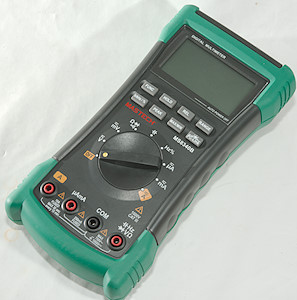
This is a high precision meter from Mastech with usb communication.
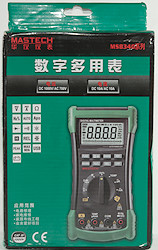

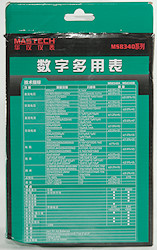

The box has an image of the small model in this series and specifications for both models on the back.
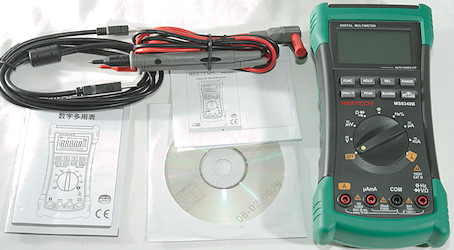
There was a lot of stuff in the box: The meter itself, probes, communication cable, CD, manual in Chinese and another in English with where small text. It is possible to find an English manual on the internet.



Probes are branded with Mastech and has removable tip covers. The CAT rating is the usual with CAT II without covers and CAT III & IV with covers.
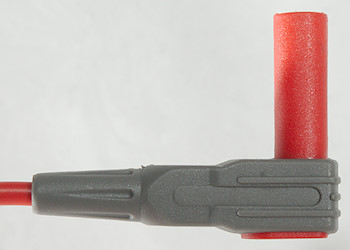
The plug is fully shrouded and standard probe plug size.
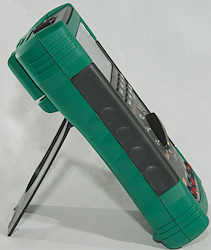
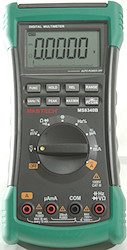
The meter is heavy enough that the rotary switch and buttons can be used when it is on the tilting bale.
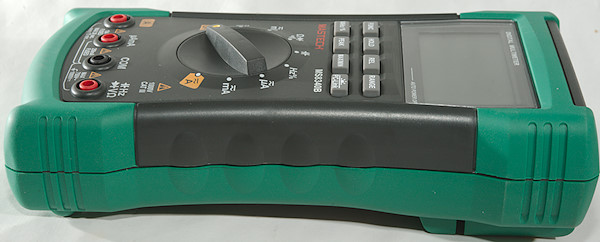
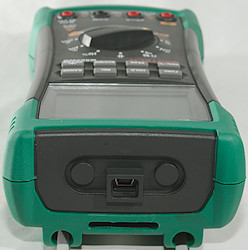
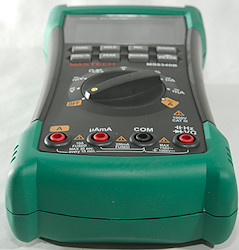
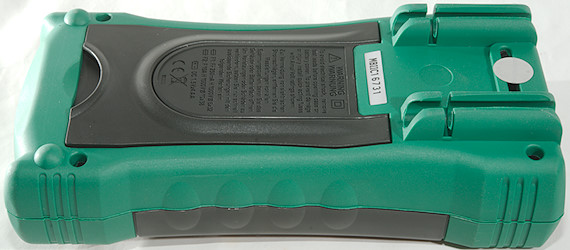
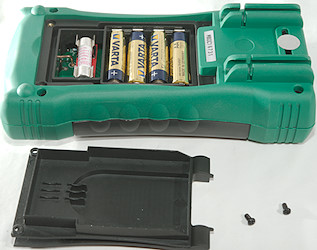

Display
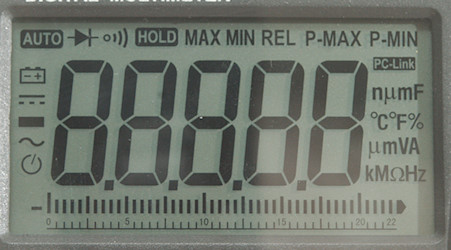
The above picture shows all the segments on the display. Not all segments are used.
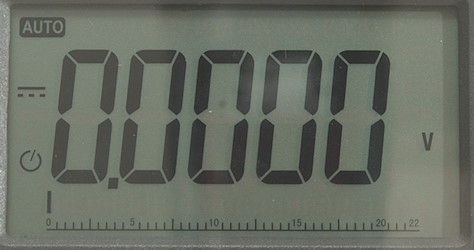
Typical display during usage, it will show the main number, a bargraph and what measurement is selected.
Functions
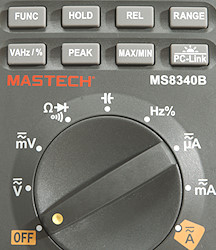
Buttons:
- Func: Select between the different modes on each position of the range switch.
- Hold: Freezes the display
- Rel: Shows values relative to current value
- Range: Manual range selection, hold down to return to automatic ranging.
- VAHz/%: Select frequency and duty cycle display in voltage and current modes, in frequency mode it will select duty cycle.
- Peak: Capture peak voltages
- Max/min: Select max/min mode, press to toggle between max/min/current, hold down to disable again.
- PC-Link: A short press will turn background light on, hold down to enable data output, this will also disable auto power off.
Peak, max/min and Rel will all select manual ranging (Peak will not restore auto range again).
Rotary switch:
- Off: Meter is off
- V: VDC and VAC, use FUNC to select DC or AC.
- mV: Millivolt DC and AC, use FUNC to select DC or AC.
 : Resistance, continuity and diode
: Resistance, continuity and diode
 : Capacitance
: Capacitance
- Hz: Logical frequency and duty-cycle (use SELECT).
- uA: Microampere range, use FUNC to select DC or AC.
- mA: Milliampere range, use FUNC to select DC or AC.
- A: Ampere range, use FUNC to select DC or AC.
Input
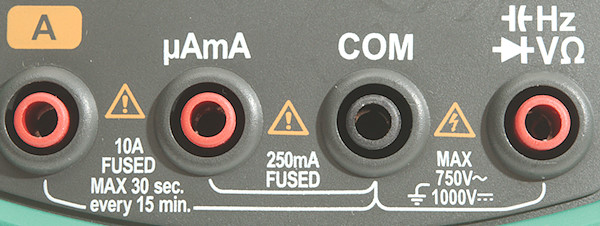
- A: High current, maximum current is 10A
- mAuA: The lower current ranges.
- CON: The common terminal for all ranges.
- xxx: All other ranges.
Measurements
- Volt and frequency
- At 1Vrms in VAC frequency range is from 10Hz to 100kHz
- VAC/VDC frequency range requires a zero crossing.
- At 0.1Vpp frequency input range is from 30Hz to 60kHz
- At 1Vpp frequency input range is from 10Hz to 70MHz
- At 0.1Vrms frequency input the meter can handle a DC offset from -0.3V to +0.3V
- Duty cycle works from 5% to 95% at 100kHz with 2Vpp, precision is within 1.0.
- 1 VAC is 5% down at 3.4kHz (RMS will not work at the frequency).
- Max/min needs about 470ms to capture a voltage.
- Max/min can show max/min/current value
- Peak captures min and max values, it needs about 0.1ms to capture a voltage,
- Input impedance is 8-9Mohm on DC/AC
- Milli volt input impedance is 44Mohm up to about 3V where it drops to about 1MOhm
- No specified overload protection
- Current
- Overload protection in uA and mA: 0.25A/1000V 6.3x32mm fuse
- Overload protection in A: 10A/1000V 10.3x38mm fuse
- uA and mA range has audible alarm when current is too high
- Ohm, continuity, diode and capacitance
- Ohm needs about 1.3s to measure 100ohm
- Ohm is -0.4V open and -0.9mA shorted
- Continuity is very fast (About 3ms).
- Continuity beeps when resistance is below 30ohm
- Continuity is -3.0V open and -0.9mA shorted
- Diode range uses 2.8V, max. display is 1.8997V at 0.3mA, max. current is 0.95mA shorted, bargraph works up to 2.2V
- 70000uF takes about 12 seconds to measure.
- 10uF takes about 0.6 seconds to measure.
- No specified overload protection
- Miscellaneous
- Current consumption of meter is 1.6mA in capacity and Hertz, 2.4mA in most other ranges and 3.4mA when AC is selected. Backlight adds 10mA (PC-Link is insignificant).
- Meter works down to 1.6V where it turns off, battery symbol show at 4.2V.
- Reading changes when voltage is below 3.0V and is more than 10% wrong when meter turns off.
- Backlight is stable down to about 4V, then it slow fades with voltage and is about off at 2.7V
- Display may need a few update (1 to 3) before showing the correct value.
- Viewing angle is acceptable, except from top
- Display updates around 2 times/sec
- Bargraph updates much faster than numbers (At least 15 times/sec)
- Backlight will turn off in 58 seconds
- Will automatic turn power off in about 15 minutes.
- Standard probes fits in sockets, but are hard to press down.
- Weight is 570g without accessories, but with batteries
- Size is 204 x 102 x 57.5mm.
- Probes
- Probe resistance 25mOhm for one.
- Probe wire is soft and 100cm long.

A look at the capacitance measurement waveform.

Frequency input resistance.
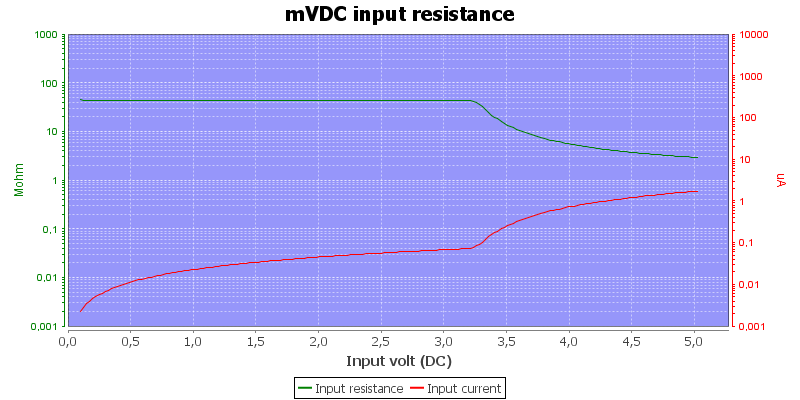
DC millivolt input resistance.

A large DC voltage can block for AC voltage readings.
Software
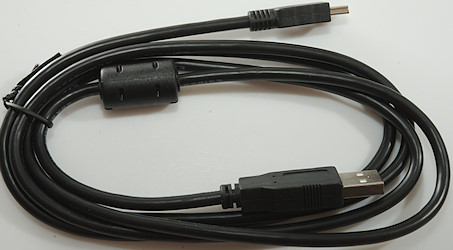
The usb cable was supplied.
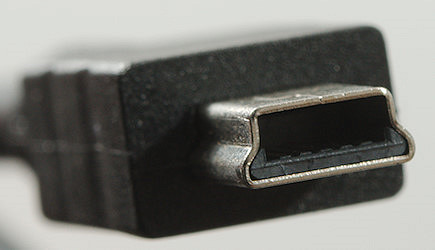
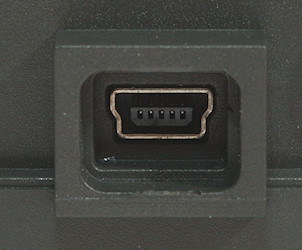
The meter uses mini usb connector, this is about obsolete.

The software is supplied on a DVD and is a bit old with a file date from 2010, it installed fine on my computer.

But when trying to communicate with the meter I got this error.
Tear down
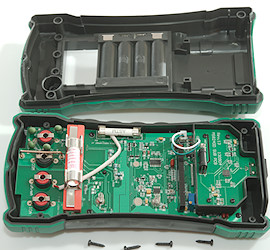
I had to remove four screws to open the enclosure, batteries can be left in or removed.
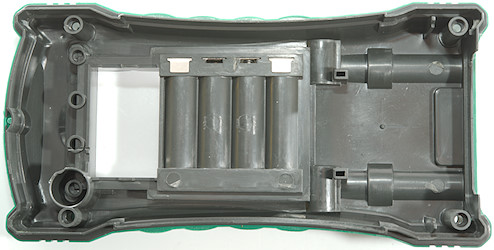
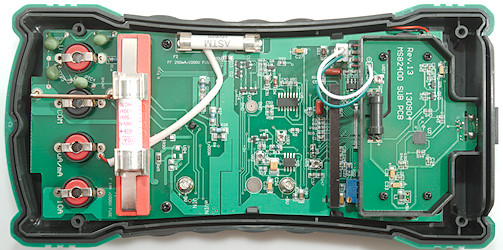
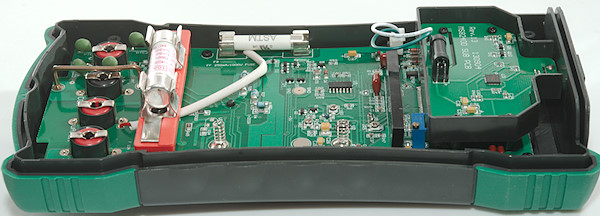
The USB interface is a separate circuit board in a plastic box.
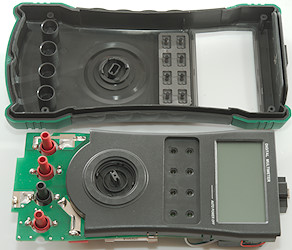
The electronic could just (more or less) be taken out.
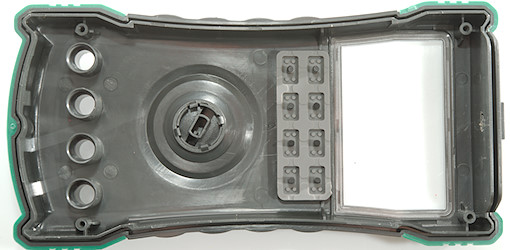

The communication interface is mounted in the box with four screws.
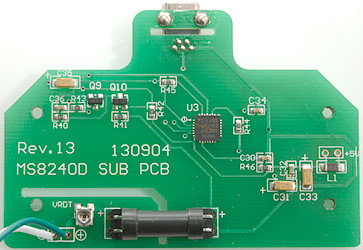
The USB interface is made with a CP2102 and communication with the meter is one way. There is a long opto-coupler between the isolated corner and the USB chip. Power for the interface is taken from USB.
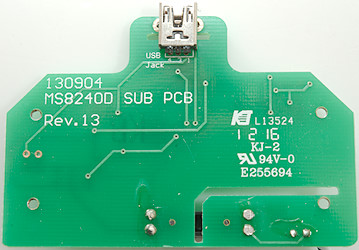
On this side is only the USB connector.
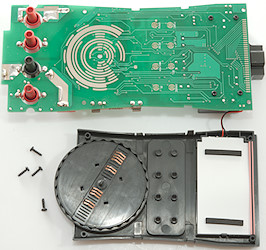
Four screws and some clips and I could remove the internal cover from the circuit board.
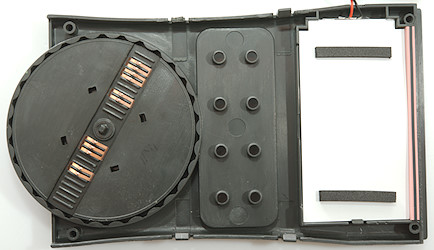
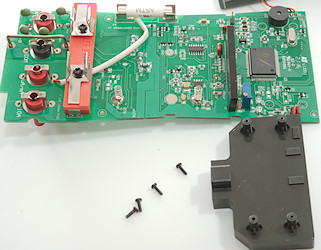
Four more screws to remove the USB interface box (It was hiding the DMM chip).
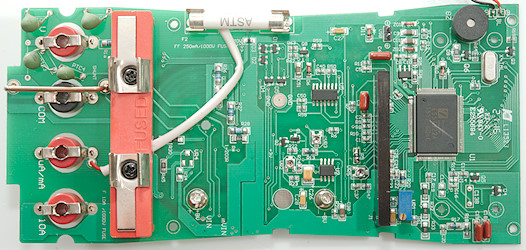
The input has some protections with four PTCs, but there is also two MELF resistors (R1A, R1b: 2x9kOhm) without any PTCs and there is no MOVs to handle 8000V transients (That is the requirement for CAT III 1000V).
The current shunts for uAmA are four resistors (R28, R27, R26, R25: 1, 9, 90, 900ohm) and one extra (R*: 470ohm in parallel with 1ohm). I am missing a TVS or a bridge to protect the resistors from overloads until the fuse blows.
The long black box on the circuit board is probably the input resistor and the range resistors.
Ohm and capacity uses PTC1 & PTC2 together with a transistor pair (Q1 & Q2) as protection for current output.
The multimeter chip (U1: ES51922A) is a 22000 count chip with external RMS converter (U2: AD737J). For supply is a 3V regulator (U3: HT75301), but there is some trickery, the pad marked "GND" is 3V above battery - supply and the circuit generate another voltage that is nearly 3V above the GND (The RMS converter needs a +/- supply).
The last IC (U5: HEF4013 Dual D flip-flip) and the diodes (D1..D5) may be related to range selection.
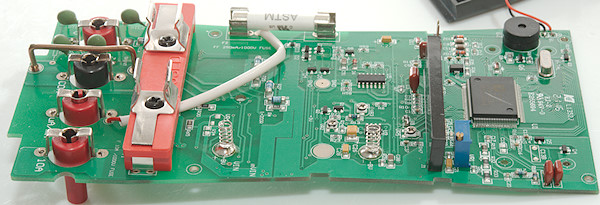
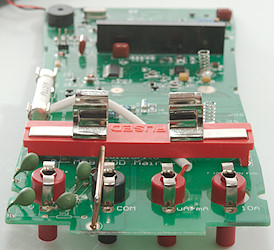
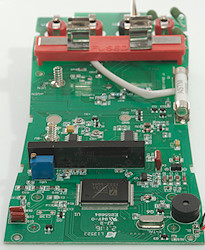


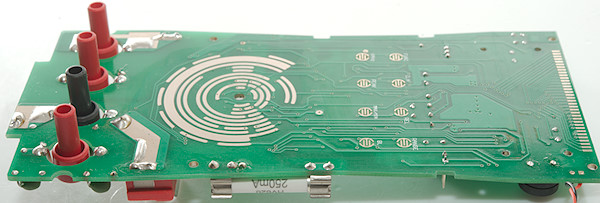
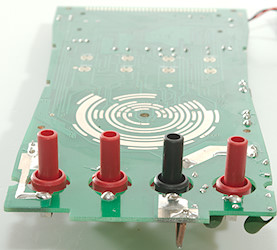
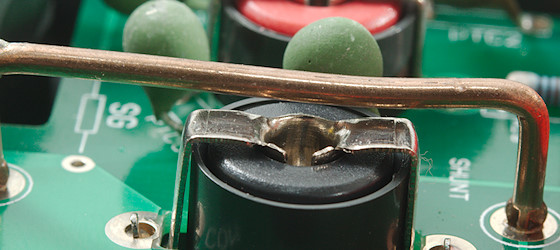
I do not really like the placement of the current shunt, it would have been nicer if it was away from the hole in the input terminal. Normal probes or banana jacks will not get near it, they are a few mm to short.
Conclusion
The safety on this meter is probably better than very cheap meters, but it has some problems.
The precision is good and it has most ranges, but the burden voltage in current is very bad with up to 3V drop and the failing software is not good either.
Notes
How do I review a DMM
More DMM reviews
 : Resistance, continuity and diode
: Resistance, continuity and diode
 : Capacitance
: Capacitance





















 : Resistance, continuity and diode
: Resistance, continuity and diode
 : Capacitance
: Capacitance






























